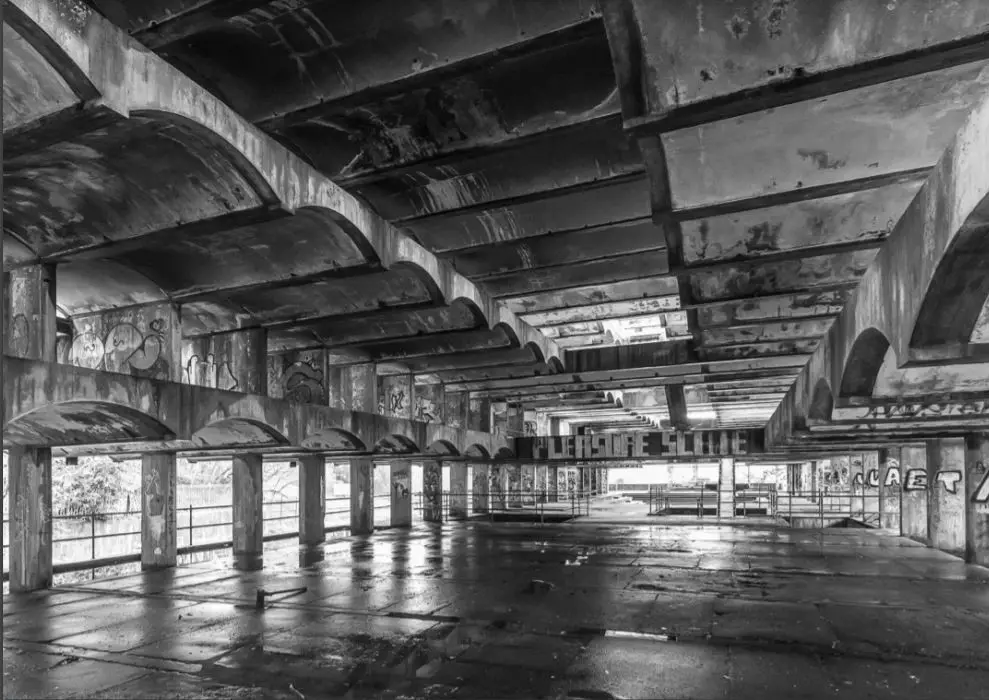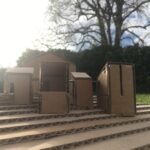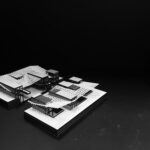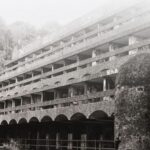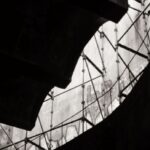Saint Peter’s Seminary Cardross Study Part One, Modern Scottish Architecture, Architectural Education Dissertation
Saint Peter’s Seminary Cardross Study Part 1 Article
29 + 27 November 2021
Third Year Architectural Dissertation by Daniel Lomholt-Welch, Scotland
Daniel Lomholt-Welch
Architecture MA(Hons) Dissertation
3.
Saint Peter’s Seminary: critical arguments
Five chapters
1. Spectres of Spirit: A Deconstruction of the Genius Loci
In his book titled Genius Loci: Towards a Phenomenology of Architecture, the Norwegian architectural theorist Christian Norberg-Schulz proposes the theory of the ‘Genius Loci’, a notion which has consistently attracted critical attention since it was first devised.[1] Norberg-Schulz identifies the Genius Loci to be an ancient Roman concept and that through etymology it can be traced to mean ‘Spirit of Place’ in the modern English language.[2] The Genius Loci of Roman times was a widely held belief that each autonomous being had its own spirit, often represented in the form of a deity. It was supposed that it was this spirit that brought about the existence of certain people or places, even determining their very essence.[3] Norberg-Schulz claims that the Genius Loci has remained a core aspect of existence throughout our history, and that although the term is no longer a part of our active vocabulary, the concept remains just as important. He references how artists and writers capture this Spirit of Place, often finding inspiration in the true essence of local character.[4] Norberg-Schulz grounds his concept in Heidegger’s notion of ‘Dwelling’, and the dual aspects of ‘space’ and ‘character’ (the character of an environment) which form the totality of the Genius Loci. These two aspects are responsible respectively for the orientation and identification of man, in an environment which is constituted by ‘things’ which all have inherent ‘meaning’.[5] For Norberg-Schulz, place is understood to be the concrete manifestation of man’s dwelling, the physical matter of which gives rise to the total phenomenon that is the Genius Loci.[6] He asserts the Genius Loci as a singular essence of place that is vital to Holderlin’s pronouncement that it is through poetry that man Dwells on earth.[7] Norberg-Schulz argues that in order for us to do so, we must bring this essence to visibility through architecture, imploring that we ‘concretize the Genius Loci.’[8] He supports his argument throughout with images of various places which can be determined to bring visibility to the Genius Loci to varying degrees due to their ability to give orientation and identification to man. The use of images is vital in order to prove the instantaneous wholeness of the Genius Loci, that it is possible for one to grasp its entirety much like one would perceive an image in its entirety.[9]
The specific example of Saint Peter’s Seminary provides an intriguing case study for the application of Norberg-Schulz’s theory. As a highly articulated space for religious practice its design sought to communicate the essence of those rituals and the meaning inherent to them, an essence one could equate to the Genius Loci.[10] As a building with a very specific singular purpose – the worship of God – one could reason that the building plausibly had a strong Genius Loci. Visibly enhanced by the daily rituals, religious imagery and architectural language, it would have been clear to visitors what the function of the building was.[11] Photos from the Seminary’s functioning years portray a space of distinct qualities which arguably portray an essence of the space (Fig. 1).[12] However, it is in the use of images that we encounter the first phantom of Norberg-Schulz’s ideology. The architectural historian Alberto Perez-Gomez retaliates that to perceive any cultural milieu in such a two-dimensional, material, and inanimate way is extremely reductive to an argument that seeks humans to Dwell poetically. He claims that such deep-rooted issues as the ones that Norberg-Schulz seeks to relate to architecture and place are deserving of an equally deep portrayal, and not one that is inherently superficial.[13] The use of the image as a medium to correspond the depth of meaning inherent to a place is surely contradictory and falls short of truly orientating and identifying man within his place. Regardless of the meaning that is inherent within the place pictured by the image, such a depiction will always be a shadow of itself. The use of images is arguably counter-productive, leading to an understanding of architectures role in giving meaning to a place that is based more on aesthetics than anything else. In observing the image of Saint Peter’s shown above, we may perceive some aesthetic signifiers of narrative, such as the priest walking down the ramp towards the crypt. This identifies the space as being used for religious purposes, and that there is a form of ritual inherent to the usage of the space. But we have little idea of the wider context of the situation pictured, whether the priest carried this out every day for example, or whether he did indeed truly believe in the cause for which his vocation existed. These signifiers are ambiguous, and only communicate a faint trace of the place’s spirit. Problems also arise in his inability throughout his book to portray a place that is deficient in a sense of the Genius Loci, making little effort to elucidate the antitheses of his theory.[14]
The issues that arise when Norberg-Schulz’s use of imagery is interrogated are symptomatic of wider problems that permeate his theory in general. Another aspect of the theory of the Genius Loci that is troubling is the potential for subjective differences in such a phenomenon. In the specific case of Saint Peter’s, this weakness of the Genius Loci is exemplified in the difference between the subjective experiences of a religious and non-religious person when visiting the Seminary when it was functional.[15] For a religious person, the space may have held an essence that was steeped in its denomination as a space for religious practice (in fact, even as a ruin it may still give rise to this feeling[16]). However, for a non-religious person the space would undoubtedly have had qualities of orientation and identification that differ, thus leading to a different Genius Loci and contradicting its totalising nature. The architectural historian Harriet Edquist questions how the Genius Loci, if it does indeed exist, manifests itself. For Norberg-Schulz, she claims, it appears to manifest itself directly to the human consciousness.[17] This implies a universality to the spirit of a certain place, that it is the same objective essence irrelevant of the subject who experiences it. For Edquist, this is a key flaw in the ideology of the Genius Loci, a flaw which suggests ‘the obliteration of the human subject’.[18] It is clear that Norberg-Schulz avoids mention of the human subject in his theory, instead grounding his work in Heidegger’s notion of ‘Dasein’, or ‘being in the world’.[19] This notion emphasises a oneness between subject and object, but fails to provide for any form of differentiation between the Dasein of one person to another. His theory imposes a meta-narrative that is supposedly universal, which conditions everyone to experience a space in the same way.[20]
In the same way that it concretises the subjective perception of the spirit of a certain place into one definite essence, the theory attempts to concretise narrative into the Genius Loci.[21] In asserting a totality of spirit, the theory implies the compression of layers of history into a singular essence, which denies the importance, or even presence, of time. In presenting his theory, Norberg-Schulz uses a series of examples of places which exhibit a certain Genius Loci, the majority of them being bygone architectures of communities that were rooted in their time and place.[22] By denying time an active role in the conception of Genius Loci, he creates a conflict: the Genius Loci must be able to evolve as time progresses if it is to be seen to be as anything more than a transient phenomenon, or it must be a static, unchanging thing that persists despite changes to the objective physical realm that it is manifested from. Norberg-Schulz seems to opt for the latter, a choice which has led to critics accusing him of being strongly traditional and nostalgic.[23] Using a lexicon of terms such as ‘concretise’, it can indeed appear that he desires to fossilise the process of time. Again, Saint Peter’s provides strong evidence to counter Norberg-Schulz’s theory, by virtue of its clear aura of multiple narratives that continue into the present day.[24] This narrative fragmented from the singular into the plural at the point when the Seminary was deconsecrated and abandoned, its purpose laid to indeterminacy. This indeterminacy resulted in the contestation of the space by various usages, and the conflict over its purpose by numerous opinions.[25] This pluralistic existence contradicts the theory of Genius Loci that is based on a space having a singular, total essence, and yet the space continues to evoke meaning for many of those who visit it, finding it to have a certain spirit.[26]
In recent years various organisations have attempted to find new purpose for the decaying shell of Saint Peter’s, invariably failing in their attempts to do so. What each of these attempts to bring determinacy and purpose back to the Seminary could be seen as is an attempt to resuscitate the Genius Loci of the space. There is an evident drive amongst some, many from the architectural profession, that something must be done to return a purpose to Saint Peter’s.[27] The notion that the building must serve a purpose, that it must retain a singular essence, is one that haunts it and leads to the contention that the theory of the Genius Loci is a spectre of the Seminary. As the French philosopher Jacques Derrida points out, spectres occupy the past and the future, if not actually the present. They are, for him, a future possibility.[28] The statement that architecture must ‘concretise the genius loci’ is one that must ring with familiarity for those who propose the revitalisation of Saint Peter’s, if not faintly ironic due to the dilapidated state of its concrete vaults. What can be said of the Genius Loci at the Seminary in its current state then, is that it is not present as a whole, but fragmented and transitory. The building’s essence, if such a thing does exist, is constantly in flux – there is no ‘stabilitas loci’, to borrow the words of Norberg-Schulz.[29]
Christian Norberg-Schulz’s ideology relating to the Genius Loci is one that is fraught with flaws, such as its lack of engagement with subjectivity, and its relationship to narrative of place. The theory emphasises the singular totality of spirit of place, and yet its existence has been haunted by its failure to engage with plurality. Its insistence on an essentialist homogenous entity that unites all difference has resulted in the haunting of its very own spirit by spectres.
[1] Rowan Wilken, ‘Critical Reception of Norberg-Schulz’s Writings on Heidegger and Place,’ in Architectural Theory Review 18, no. 3 (2013), 341.
[2] Christian Norberg-Schulz, Genius Loci: Towards a Phenomenology of Architecture (New York: Rizzoli, 1980), 18.
[3] Norberg-Schulz, Genius Loci, 18.
[4] Ibid.
[5] Ibid., 19.
[6] Wilken, ‘Critical Reception,’ 343.
[7] Norberg-Schulz, Genius Loci, 23.
[8] Norberg-Schulz, Genius Loci, 23.
[9] Alberto Perez-Gomez, ‘The City is not a Post-Card,’ in An Eye for Place: Christian Norberg-Schulz: Architect, Historian and Editor, ed. Gro Lauvland (Oslo: Arkitektur Publisering, 2009), 28.
[10] Karen Wenell, ‘St Peter’s College and the Desacralisation of Space,’ in Literature and Theology 21, no. 3 (Autumn 2007), 263.
[11] Wenell, ‘St Peter’s College and the Desacralisation of Space,’ 262.
[12] Gillespie, Kidd & Coia Archive, ‘Sanctuary Ramp,’ Glasgow School of Art,
https://gsaarchives.net/collections/index.php/informationobject/browse?places=20848&collection=20333&sort=lastUpdated&view=card&showAdvanced=0&sq0=Architecture&sf0=subject&onlyMedia=1&topLod=0&rangeType=inclusive
[13] Perez-Gomez, ‘The City is not a Post-Card,’ 30.
[14] Wilken, ‘Critical Reception,’ 346.
[15] Erik Champion, ‘Norberg-Schulz: Culture, Presence and a Sense of Virtual Place,’ in The Phenomenology of Real and Virtual Places, ed. Erik Champion (London: Routledge, 2018), 218.
[16] Refer to survey
[17] Harriet Edquist, ‘Genius Loci,’ in Transition 4, no. 1 (Spring 1988), 81.
[18] Edquist, ‘Genius Loci,’ 81.
[19] Martin Heidegger, Being and Time (Oxford: Wiley-Blackwell, 1978), 106.
[20] Champion, ‘Norberg-Schulz: Culture, Presence and a Sense of Virtual Place,’ 224.
[21] Perez-Gomez, ‘The City is not a Post-Card,’ 31.
[22] Gunila Jiven and Peter J. Larkham, ‘Sense of Place, Authenticity and Character: A Commentary,’ in Journal of Urban Design 8, no. 1 (2003), 68.
[23] Massimo Cacciari, Architecture and Nihilism on the Philosophy of Modern Architecture (New Haven: Yale University Press, 1993), 108.
[24] Richard Waite, ‘Renewed hope for Cardross seminary after church finds new owner,’ in Architects Journal, July 27, 2020, https://www.architectsjournal.co.uk/news/renewed-hope-for-cardross-seminary-after-church-finds-new-owner
[25] Diane Watters, St Peter’s, Cardross: Birth, Death and Renewal (Edinburgh: Historic Environment Scotland, 2016), 188.
[26] Refer to survey
[27] NVA, ‘Debate of the future of St Peters Seminary at the Venice Architectural Biennale 2010,’ July 30, 2018, https://www.youtube.com/watch?v=LDuiqcRnMXM
[28] Jacques Derrida, Specters of Marx: The State of the Debt, the Work of Mourning and the New International (Routledge: London, 2006), 9.
[29] Norberg-Schulz, Genius Loci, 19.
Saint Peter’s Seminary Cardross Study – introduction
Saint Peter’s Seminary Cardross Study Part 2
Saint Peter’s Seminary Cardross Study Part 3
Saint Peter’s Seminary Cardross Study Part 4
Saint Peter’s Seminary Cardross Study Part 5
Saint Peter’s Seminary Cardross Study Conclusion
Saint Peter’s Seminary Cardross Study Dissertation Part 1 by Third Year Student at Edinburgh School of Architecture information / images from Daniel Lomholt-Welch
Edinburgh School of Architecture Student Projects
Second Year Student Projects at Edinburgh School of Architecture
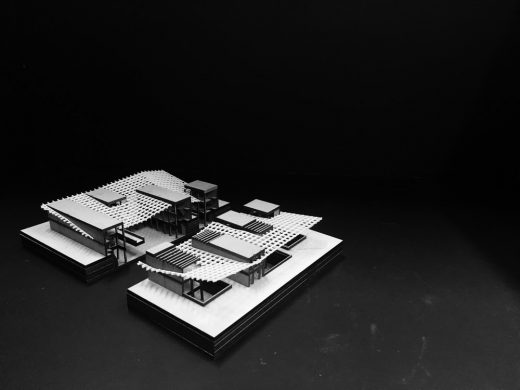
Second Year Student Projects at Edinburgh School of Architecture
First Year Student Projects at Edinburgh School of Architecture
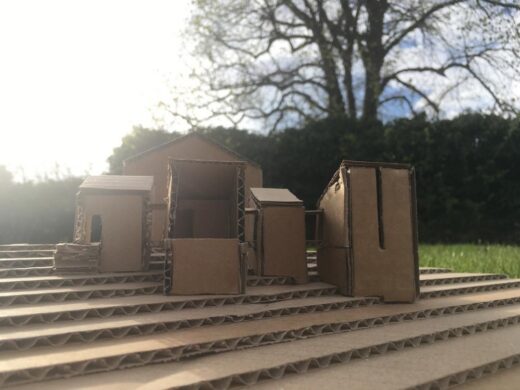
image courtesy of D L-W
First Year Student Projects at Edinburgh School of Architecture
Education Building Designs
New Macallan Distillery in Speyside
Design: Rogers Stirk Harbour + Partners (RSHP)
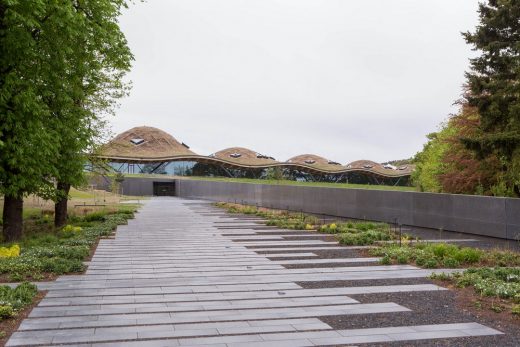
photo © Simon PricePA Wire
Architecture and Landscape Architecture | Edinburgh College of Art
Comments / photos for the Saint Peter’s Seminary Cardross Study Part 1 page welcome

